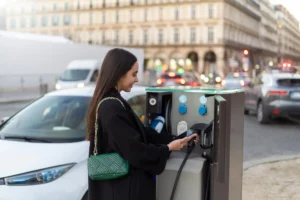
Home / EV Charging News / Do Electric Vehicle Batteries Degrade Over Time?
As the adoption of electric vehicles (EVs) continues to rise, one of the most common concerns among potential and current EV owners is the longevity of the vehicle’s battery. Just like any other technology that relies on rechargeable batteries, EV power sources can degrade over time. This article delves into the factors that influence battery degradation, how it affects vehicle performance, and what can be done to mitigate it.
Degradation refers to the gradual loss of a battery’s ability to hold a charge and deliver energy. This is a natural process that occurs in all rechargeable batteries, including those used in EVs. Over time, the components within the battery wear out, leading to reduced efficiency and capacity.
Several factors contribute to the rate at which an EV power source degrades:
As an EV power source degrades, its capacity to hold a charge diminishes, which can lead to several performance issues:
While some level of degradation is inevitable, there are several strategies that EV owners can adopt to slow down the process:
Advancements in battery technology are continually being made to improve the longevity and efficiency of EV power sources. Research into solid-state batteries, for example, promises higher energy densities and longer lifespans. Additionally, manufacturers are constantly developing better management systems to optimize charging and discharging processes.
EV batteries do degrade over time, but the rate of degradation depends on several factors, including charge cycles, depth of discharge, temperature, charging speed, and usage patterns. Understanding these factors and adopting best practices can help mitigate the effects of degradation, ensuring that your EV remains efficient and reliable for many years. As technology continues to evolve, the durability and performance of EV batteries are expected to improve, making electric vehicles an even more viable and sustainable transportation option.
